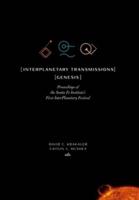Publisher's Synopsis
Concentrated solar thermal energy can be utilized in a variety of high temperature applications for both terrestrial and space environments. In each application, knowledge of the collector and absorber's heat exchange interaction is required. To understand this coupled mechanism, various concentrator types and geometries, as well as, their relationship to the physical absorber mechanics were investigated. To conduct experimental tests various parts of a 5,000 watt, thermal concentrator, facility were made and evaluated. This was in anticipation at a larger NASA facility proposed for construction. Although much of the work centered on solar thermal propulsion for an upper stage (less than one pound thrust range), the information generated and the facility's capabilities are applicable to material processing, power generation and similar uses. The numerical calculations used to design the laboratory mirror and the procedure for evaluating other solar collectors are presented here. The mirror design is based on a hexagonal faceted system, which uses a spherical approximation to the parabolic surface. The work began with a few two dimensional estimates and continued with a full, three dimensional, numerical algorithm written in FORTRAN code. This was compared to a full geometry, ray trace program, BEAM 4, which optimizes the curvatures, based on purely optical considerations. Founded on numerical results, the characteristics of a faceted concentrator were construed. The numerical methodologies themselves were evaluated and categorized. As a result, the three-dimensional FORTRAN code was the method chosen to construct the mirrors, due to its overall accuracy and superior results to the ray trace program. This information is being used to fabricate and subsequently, laser map the actual mirror surfaces. Evaluation of concentrator mirrors, thermal applications and scaling the results of the 10 foot diameter mirror to a much larger concentrator, were studied. Evaluations, r...












